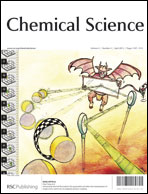Long lived charge separation in iridium(iii)-photosensitized polyoxometalates: synthesis, photophysical and computational studies of organometallic–redox tunable oxide assemblies†
Abstract
Keggin and Dawson-type polyoxometalates (POMs) covalently grafted to heteroleptic cyclometalated iridium(III) complexes (


 Please wait while we load your content...
Please wait while we load your content...